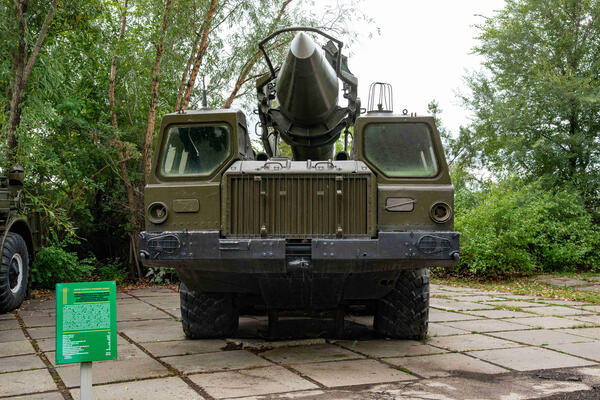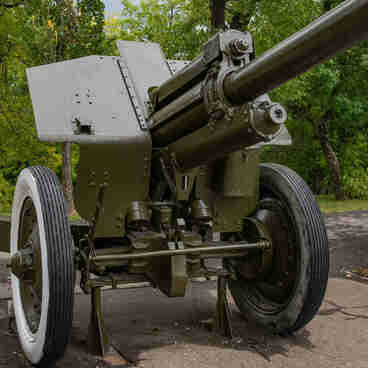Currently, the Russian ground forces are armed with mobile ballistic missile systems. They are designed to defeat enemy targets in their operational rear and troop rear units.
The museum displays the 9P117M self-propelled launcher of the 9K72 tactical complex. This missile system was developed in the Special Design Bureau in Zlatoust — SKB-385. The project was led by Viktor Petrovich Makeyev.
The self-propelled launcher entered service with the Soviet Army in 1962. It was designed to destroy manpower, control stations, airfields and other important enemy facilities.
The 9P117M unit was mounted on the MAZ-543 four-axle truck chassis. The rocket was installed on a jib, which was fixed on hinges on the rear beam and could rise to a vertical position.
The 8K14 (R-17) ballistic missile used a liquid rocket engine, an autonomous inertial control system and an inseparable warhead. The missile could be armed with nuclear, high-explosive or chemical warheads with a firing range from 50 to 300 km. At the same time, the average probable circular deviation from the target was from 350 to 610 meters.
The 9K72 complex was reliable and easy to use. However, it became the last tactical missile system of the ground forces that used a liquid rocket.
In addition to the R-17/R-17M rocket, this complex included lifting, refueling, testing and auxiliary equipment. In total, it consisted of 25 items, including wheeled and tracked launchers.
The 9K72 tactical missile system was in service with the ground forces of the Soviet Army. It was exported to the Warsaw Pact countries and the Middle East. The 9K17 complexes took part in a number of local wars and conflicts, including in combat operations on the territory of Afghanistan. More than 1000 R-17 missiles were fired there.
The museum displays the 9P117M self-propelled launcher of the 9K72 tactical complex. This missile system was developed in the Special Design Bureau in Zlatoust — SKB-385. The project was led by Viktor Petrovich Makeyev.
The self-propelled launcher entered service with the Soviet Army in 1962. It was designed to destroy manpower, control stations, airfields and other important enemy facilities.
The 9P117M unit was mounted on the MAZ-543 four-axle truck chassis. The rocket was installed on a jib, which was fixed on hinges on the rear beam and could rise to a vertical position.
The 8K14 (R-17) ballistic missile used a liquid rocket engine, an autonomous inertial control system and an inseparable warhead. The missile could be armed with nuclear, high-explosive or chemical warheads with a firing range from 50 to 300 km. At the same time, the average probable circular deviation from the target was from 350 to 610 meters.
The 9K72 complex was reliable and easy to use. However, it became the last tactical missile system of the ground forces that used a liquid rocket.
In addition to the R-17/R-17M rocket, this complex included lifting, refueling, testing and auxiliary equipment. In total, it consisted of 25 items, including wheeled and tracked launchers.
The 9K72 tactical missile system was in service with the ground forces of the Soviet Army. It was exported to the Warsaw Pact countries and the Middle East. The 9K17 complexes took part in a number of local wars and conflicts, including in combat operations on the territory of Afghanistan. More than 1000 R-17 missiles were fired there.





